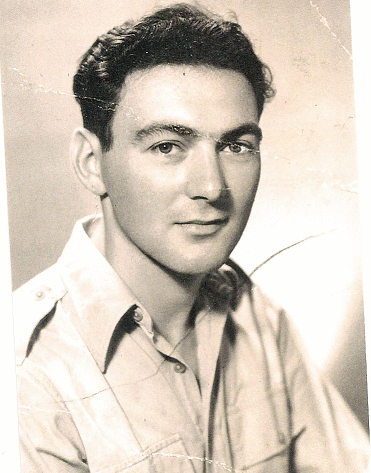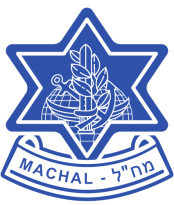
Following is a rough diary of my trip to Israel. The months are correct, but I cannot be sure of the exact dates except for the date of my arrival in Tel Aviv
March – Approached Jewish Agency in London and offered my services, ostensibly to join a kibbutz. One had to be discreet about one’s reason for going to Palestine at that time. Left my name and address and was advised that I would be contacted shortly. A week later I received instructions to meet a man wearing a Pork Pie hat with a feather on the side, and carrying a copy of the New Statesman, at the corner of Oxford and Poland Streets. The man I met questioned me about my rabbi, synagogue and when and where I had been Bar Mitzvah. Ten days or so later I received a letter telling me to go to a synagogue hall in Notting Hill to have a medical check-up, which I did, and was told that I would receive further instructions via the post.
Late April – Another letter with a ticket to travel to Paris from Victoria Station on the evening Boat Train, with an address to the Rue de la Grande Armeé off the Champs Elysees and close by the Arc d’Triomphe to which I was to report. Travelled as instructed to Paris. On the train from Calais I met up with four other fellows who were also on their way to Palestine. In Paris we were given rail tickets to Marseilles and instructions whom to contact when we arrived there. On arrival at our destination we were taken to a camp named Grand Arénas high in the hills above the city.
The camp held several hundred people awaiting transport to Palestine, the majority of whom were refugees from Poland and other eastern European countries. Most had been in concentration camps during the war and I saw for the first time. the numbers tattooed on their arms, which was quite a shock. It is one thing to read about such things, another to see it for yourself.
May – Whilst we were in Grand Arenas, the State of Israel was declared on 15th May, 1948. Spent the next couple weeks getting fit by running up and down the mountains around Marseilles and making friends with people from all around the world – USA, Canada, Norway, France, Holland, Argentine, Chile, and of course the UK. Later on some of my. best friends were from South Africa, Australia and even one from the Belgian Congo. Sent to another smaller camp, St Jerome, where I spent one night, and where I met up with Sidney Gumpritch (subsequently changed to Graham), a friend from the UK. The following evening set off in a coach to Port de Bouc to the west of Marseilles, a hair-raising drive over the mountains in total darkness.
We arrived at Port de Bouc about 2 o’clock in the morning. and immediately embarked on what appeared to be nothing more than a large fishing boat. This idea was soon dispelled when we were told to go below decks and found that the hold had been filled out with rough wood planking on which we had to sleep. We were all exhausted by this time and bunked down for the night. The next morning was a revelation. I had spent some of my time in the Royal Navy on small mine-sweepers, each with a crew of about sixty. This boat was even smaller, weighing about 218 tons and there were 230 of us. The boat was a typical Mediterranean cargo vessel that traded from port to port all over the Mediterranean picking up cargo where-ever it could. It had a crew of three, a very low-powered engine and two sails. It made more speed under sail than with engine. The name of the boat was the “Narkis” (Hebrew for daffodil). After breakfast, which consisted of tea, a couple of hard-tack biscuits and a triangle of cheese, we assembled on deck, almost shoulder-to-shoulder, and were given instructions about the journey, and how we were expected to behave. Our leader was a Palmachnik, who made it clear in no uncertain terms that his word was law. He chose some of us, what he called Anglo-Saxim ex-servicemen to act as guards and to make sure his instructions were followed. We were issued with truncheons. None of us were happy with this idea, but we agreed amongst ourselves that we could handle any problem without resorting to violence.
I will not detail the journey, except to say it took 13 days to cross the Mediterranean to Israel. We stopped only once, at Rhodes, for fresh water supplies.
We eventually arrived off the coast at Jaffa on the 3rd June and were landed by barges. At this time, a truce was in force between Israel and the invading Arab armies, supervised by the United Nations. One of the terms of the truce was that all people of military age arriving in the country had to be sent to camps supervised by the UN so that they couldn’t join the Israeli forces. By delaying our departure from Jaffa until after dark and ensuring that all those of military age were in the very last coach, we soon found ourselves diverted into Tel Litwinsky army base. We arrived some time after midnight and were given tea and slices of bread with cherry jam. which I can still taste when I think of that night, the finest meal I have ever had!
The following day, after induction into the IDF, we were allocated to our various units according to our previous experience. Sidney and I were was sent to the navy which at that time hardly existed, and then sent to Sidna Ali, an ex-Palestine police fort on the coast near Herzlia. We spent our time listening to weather forecasts from Cyprus and Gibraltar. Israel at the time had no meteorology service. After a couple of weeks we were sent to Jaffa to learn Hebrew. We were joined by Harry Olofsky, who later with Sidney became my closest friend, and a couple of other fellows – Dave Melnick an American, and Ari Kurtzman, a Dutchman who had deserted from the Dutch Navy to come to Israel. We didn’t learn much Hebrew, and had not the least idea what we were supposed to be doing there.
Eventually we were sent to Haifa and stationed at Stella Maris, a monastery on the French Carmel overlooking Haifa Bay. We were put to work as radio operators trying to contact an Israeli agent operating in the Sinai Desert. No success, at least we never received an answer. I learned many years later that he had heard our messages but was unable to transmit replies.
Several weeks later we were sent back to Jaffa and became the nucleus of- Sherut Modiin 2, a section of Military Intelligence that intercepted the broadcasts of the various Arab Armies. We had been selected for this task on our arrival in Israel, but had to wait for equipment and for Israeli operators to be trained. Due to the secrecy of this work, it was considered advisable to keep us in the dark – what we didn’t know we couldn’t talk about.
I was in the IDF until June 19th 1949, after which time I joined a Moshav Shitufi named Beth Chever, of which I was a founder member, and we took over some land at Sheikh Munis (now called Ramat Aviv), on the banks of the Yarkon, north of Tel Aviv. It is the site of a famous archaeological dig known as Tel Quesila. The Eretz Israel Museum is close by, and houses some of the artifacts from the dig.
My wife and I were married in the cheder ochel (dining room) which has since been demolished, which stood close to the Arab house which still stands there, although it has been converted into some sort of mill. The name Sheikh Munis is hardly used any more, only by people who knew the area in the early days of the state.
I have enough memories to fill a book. It was an honor to be part of the history of a new nation. Unfortunately, I am unable to convey the excitement. the sense of danger, or the sheer sense of adventure I felt at the time.

